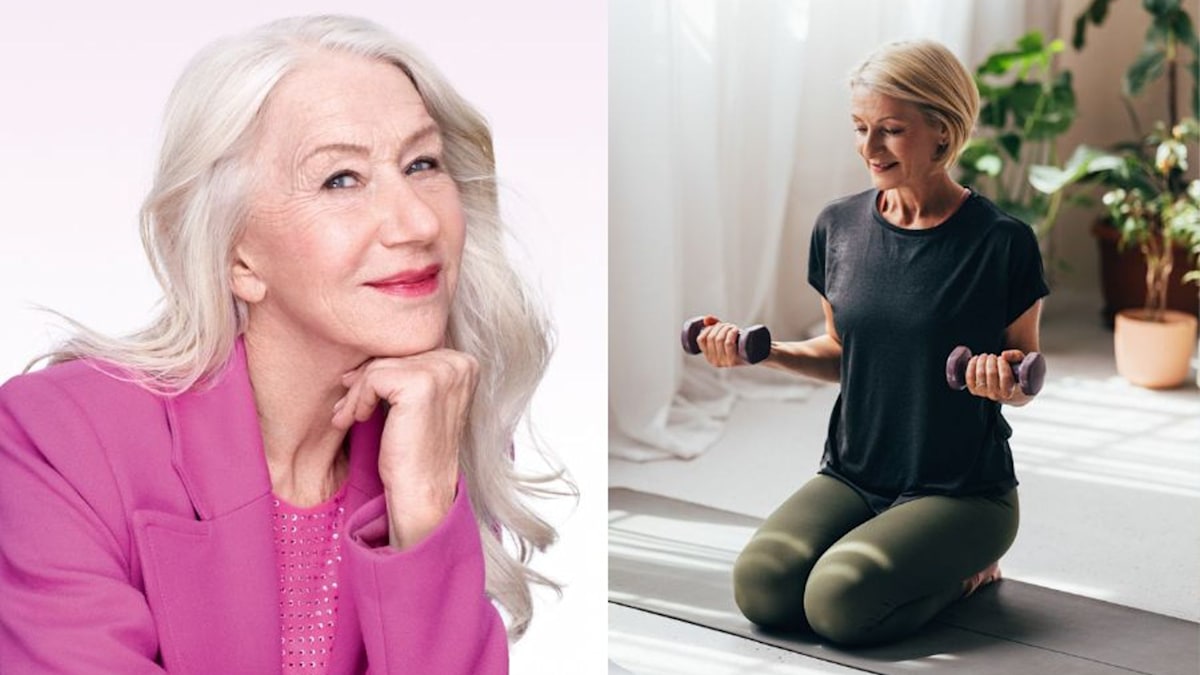
Inspired by ‘fit’ Helen Mirren? How to stay strong over 50
Helen Mirren, 79, caused a stir in the fitness world in January when her military fitness routine went viral.
The actress revealed she’s been doing the same 12-minute exercise routine every day for the last 60 years, with her intense workout dreamed up by the Royal Canadian Air Force, involving ten basic exercises.
Given her supreme fitness as she approaches 80, the actress was an obvious choice to front Age UK’s latest campaign, which encourages people over 50 to embark on a more active lifestyle. Helen urges those aged 50 and beyond: “It’s never too late to start doing something, so why not give something a go while you’re younger?”
Age UK’s latest research showed that 47% of 50 to 65-year-olds feel that they don’t do enough exercise, with 19% said feeling unfit was a barrier, but Helen reassured them: “It doesn’t have to be joining a gym; it can just be small changes like taking a short walk or yoga, which I still enjoy.”
Keen to understand if Helen’s laidback advice when it comes to fitness is valid, we called upon Pilates, barre, strength and cardio teacher, Tara Riley, for her take on fitness in midlife.
Fitness over 50
When we queried if small changes can really have an impact, Tara explained: “How much fitness people participate in over 50 depends on many factors and will vary from person to person.
© InstagramTara Riley shares her fitness advice
“Your fitness history is a key consideration, as some people will have trained throughout their lives whereas others will have done next to nothing.
“For people who have previously been fairly inactive, they often have a sudden realisation that they should be doing some form of exercise when the aches and pains start to kick in, so for them it’s important to consider how much their body can actually cope with if they want to embark on a fitness regime.”
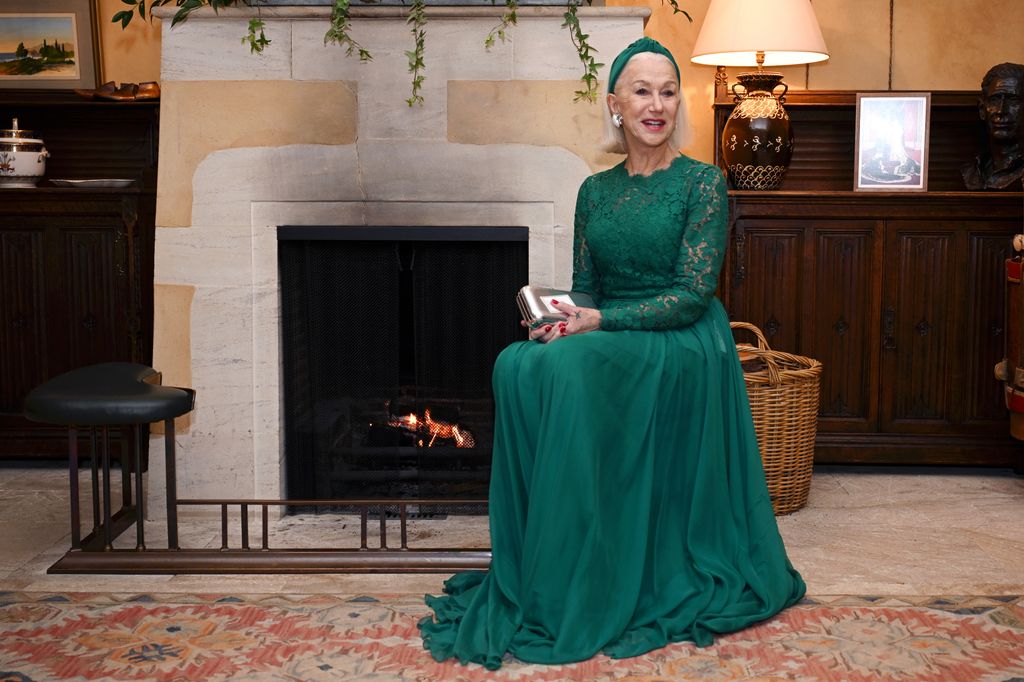
With this in mind, Tara tells her clients that it’s not about how much, it’s the type of exercise they do that’s going to help them. And this is where the right combination of strength, mobility and cardio pays dividends.
Say HELLO! to your Second Act
HELLO!’s Second Act is a newsletter for women in midlife and beyond. It’s completely free to sign up and is a one-stop-shop for advice and inspiration on the issues our Second Act community have told us matter most: health, relationships, travel, menopause, divorce, careers, finance and more.
The right combination
“No matter what our fitness level is, we all get stiffer as we age, even as an instructor, I notice my joints and muscles feeling tighter than they did when I was 20. So, with this in mind, exercise such as Pilates and yoga which promotes mobility, are recommended.
“Strength training is also key as it helps maintain strength in everyday situations.” Keen to reassure people who have never been acquainted with a dumbbell, Tara adds: “This doesn’t mean heavy lifting – light weights are perfect when you’re starting out – even going for a walk wearing light wrist weights, which will also provide a cardiovascular workout.”
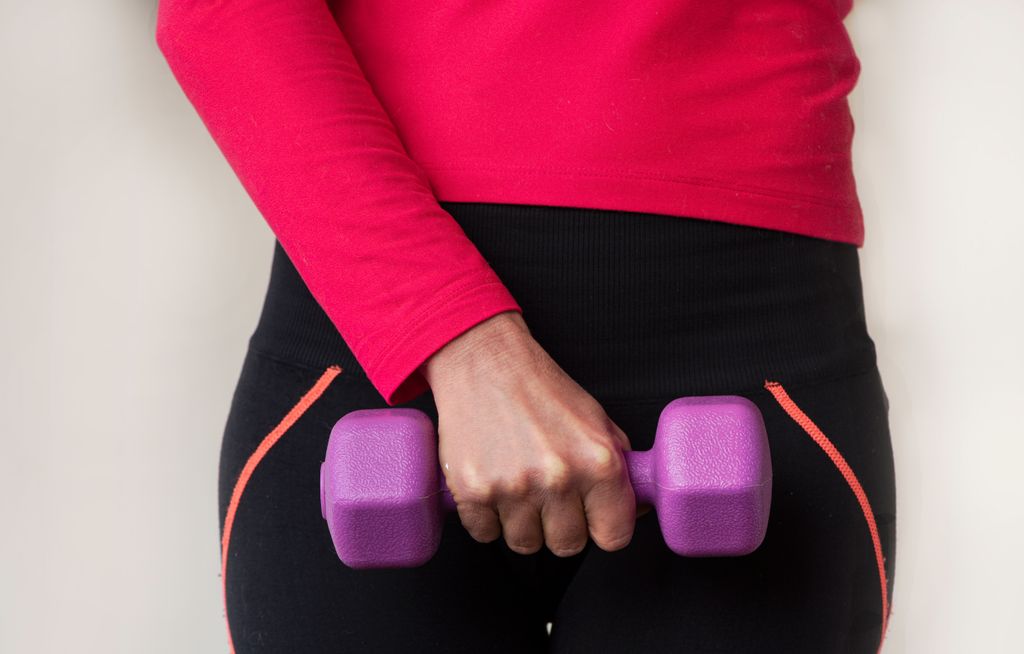
Tara sings the praises of workouts combining strength and cardio – i.e. Pilates and barre, explaining: “It’s important to get a good balance in your routine to keep your heart healthy. If you’re already fit, running or cycling can provide that cardio hit in addition to strength training.”
She also notes that you don’t need to be sweating it out for hours in the gym to feel the benefit of exercise. “20 minutes is sufficient – many people are put off by the thought of an hour of exercise.”
As Dame Helen Mirren noted, Tara says your movement can be a morning walk or a lunchtime spot of gardening. “Being active comes in lots of forms,” she says.
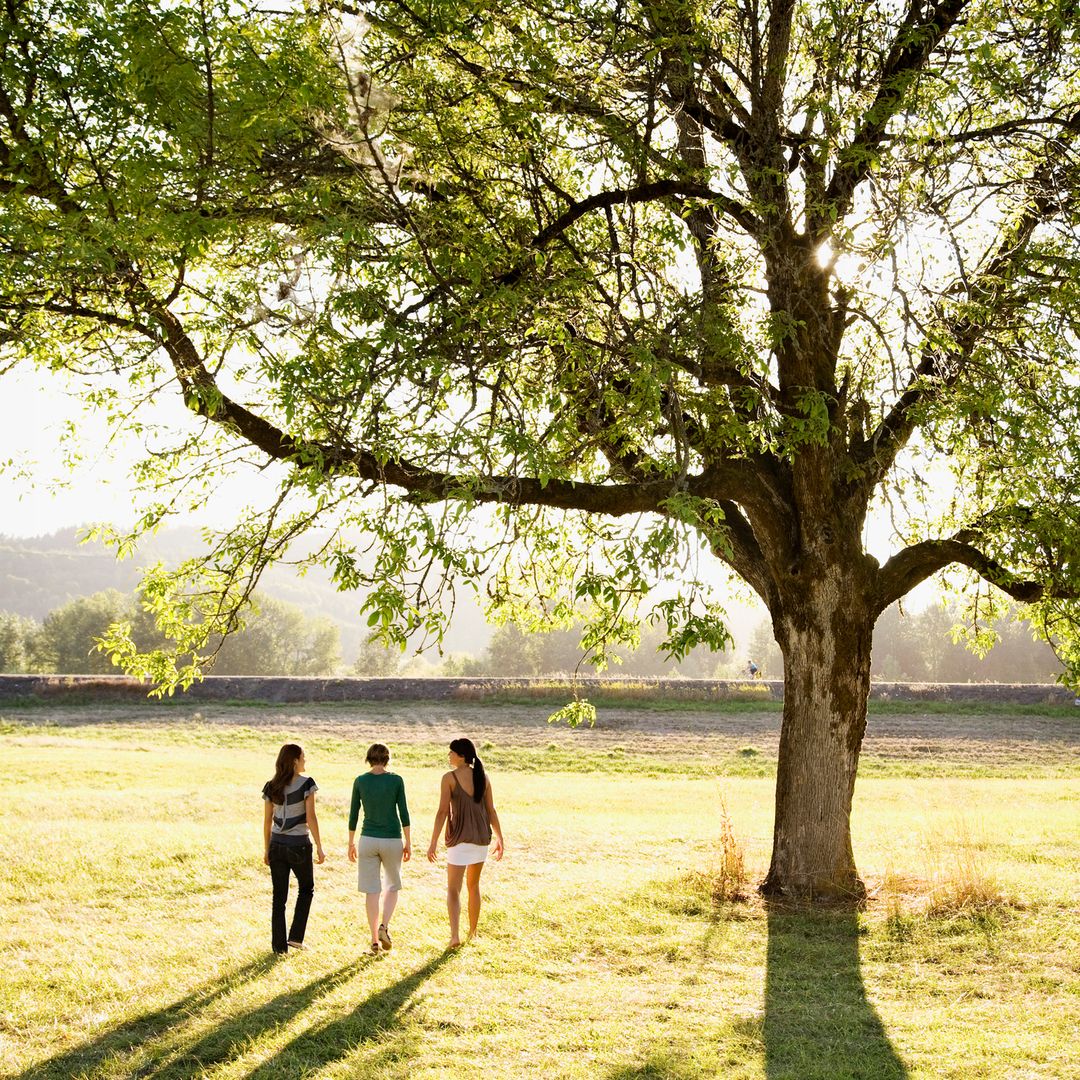
Feeling fit
Noting Age UK’s research that many people feel too unfit to begin a workout routine, Tara says: “I have clients who’ve taken time off for whatever reason and feel they can’t start sessions again because they’re not fit enough. This is the precise reason why you should start back!”
Here she shares her advice for getting into fitness in midlife.
1. Modify your sessions
“I modify workouts to gently welcome people back into fitness, so they can get used to moving their bodies again.”
2. Work out at home
“Online workouts can be helpful as they help people regain confidence by working out at home, before going back to a group class or gym.”
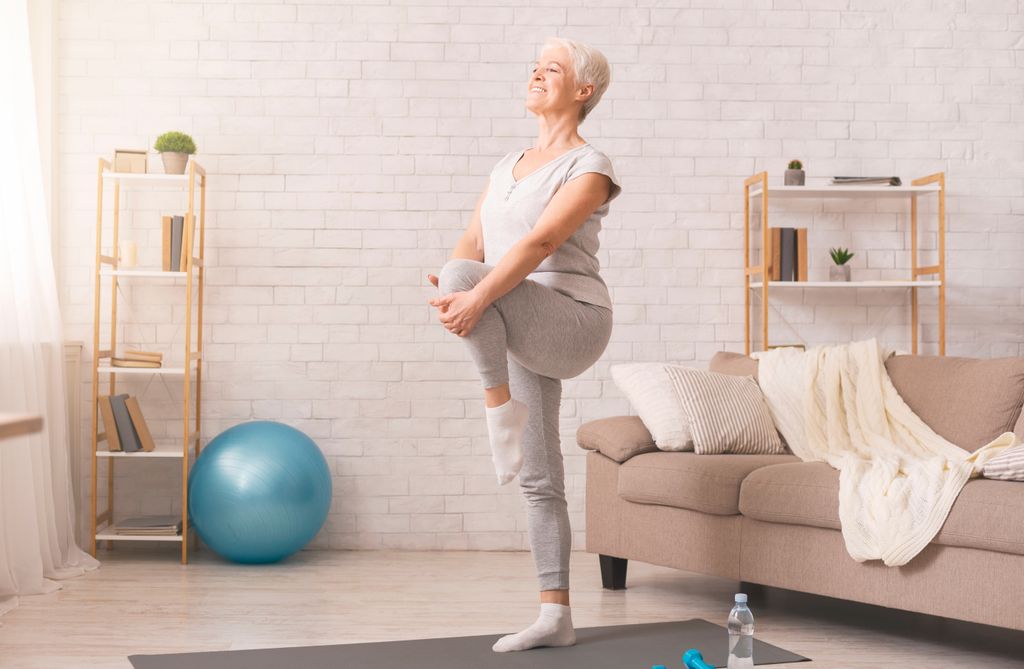
3. Habit stacking
“Habit stacking is a useful way of factoring exercise into your daily routine. For example, if you’re meeting your friend for a coffee, walk and talk instead of sitting in a cafe. This way you’re doing something you already enjoy, but are factoring in movement as well.”
Yoga in midlife
Dame Helen mentioned that yoga is part of her routine, and yoga teacher and co-founder of Kin Yoga Mats, Roisin Hope, echoes the sentiment.
“Yoga provides complementary benefits by enhancing flexibility, balance and strength—all of which naturally decline with age. The practice can help prevent falls (mostly thanks to all the balance practice), a major concern for older adults, while also reducing stress and improving sleep quality.”
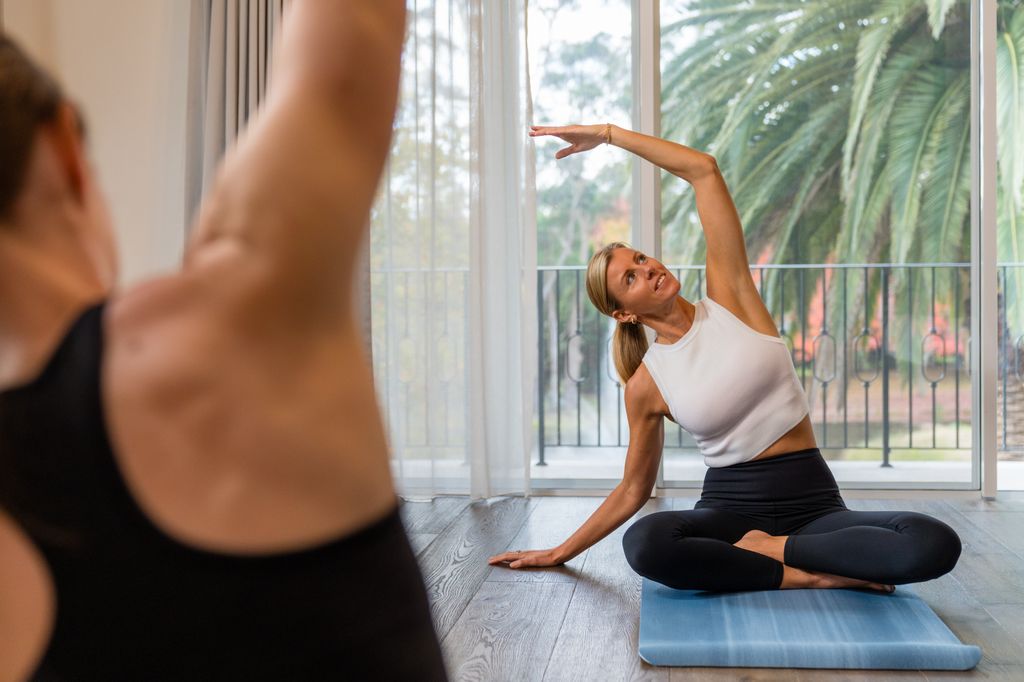
She adds: “Research shows consistency matters more than intensity for older adults. Short, manageable exercise sessions that can be maintained regularly often yield better long-term results than sporadic, intense workouts that may lead to injury or burnout.”
Roisin continues that for adults over 50, the key is finding sustainable activities that can become part of daily life. “Helen Mirren’s advocacy for accessible exercises such as walking and yoga aligns perfectly with current health recommendations for aging adults, making her advice sound and practical for maintaining fitness in later years.”
The yoga pro teaches many over-fifties yoga, sharing that her midlife clients say yoga helps them maintain mobility they feared losing. “They mention improved flexibility and balance, which translates to greater confidence in everyday movements and fewer falls.
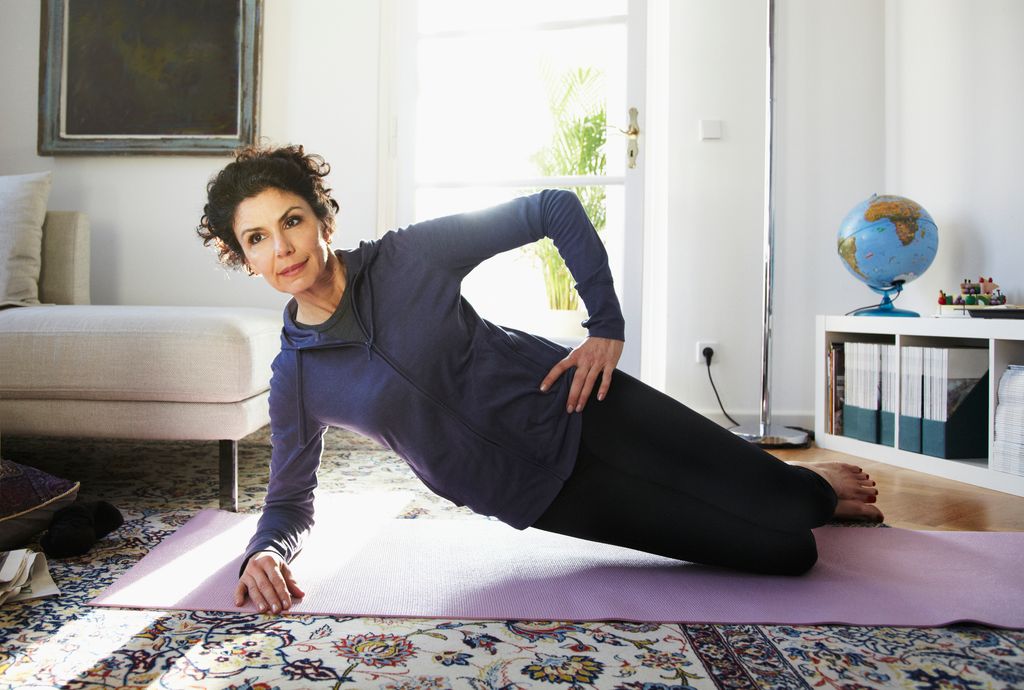
“Pain relief is another common motivator for those clients; particularly for chronic conditions such as arthritis or back pain. The gentle stretching and strengthening often reaches areas of discomfort that other exercises don’t address.”
More intense exercises
While Helen’s advice is reliable, if like 95% of HELLO! readers who recently shared that they lift weights, you’re keen to get into weight training in midlife, Tara has expert advice on taking up strength training at any age.
Strength training in midlife
1. Embrace where you’re at
“There are so many variations and options when it comes to movement that you can modify to make the exercise achievable to suit your current ability.
“Start with a lighter weight and focus on getting your form right. You can work up from there by doing a more challenging version of the exercise or doing extra reps or increasing weight.”
2. Show up
“There will always be days when you’re not motivated or just not feeling at your best. Show up.
“Your workout doesn’t have to look pretty and your squats don’t need to be perfect. We all have off days – but showing up for yourself and working through it, whatever that looks like, counts! I bet you’ll feel better than usual having done it on an off day.”
3. Train smarter not harder
“Strength training comes in lots of forms and you don’t always have to be lifting heavy weights to be moving the needle in the right direction.
“Movement modalities such as barre or Pilates are phenomenal at targeting many muscle groups, building strength and also improving endurance, posture and mobility too.”
4. It’s about longevity
“Rome wasn’t built in a day, right? Working toward a fitness goal is a marathon, not a sprint. It takes time to make physical fitness changes, and it may not always be linear. Try to look at your progress in terms of months and years not in hours or days.”
5. Be realistic
“Look at your life, energy, time and try to focus on what you can do consistently in relation to these things. A fabulous programme isn’t fabulous for you if your life, time constraints or resources mean you struggle to stick to it.”
Recommended videoYou may also likeWATCH: Five fitness-obsessed A-listers who bring their A-game in the training room
No Byline Policy
Editorial Guidelines
Corrections Policy
Source
